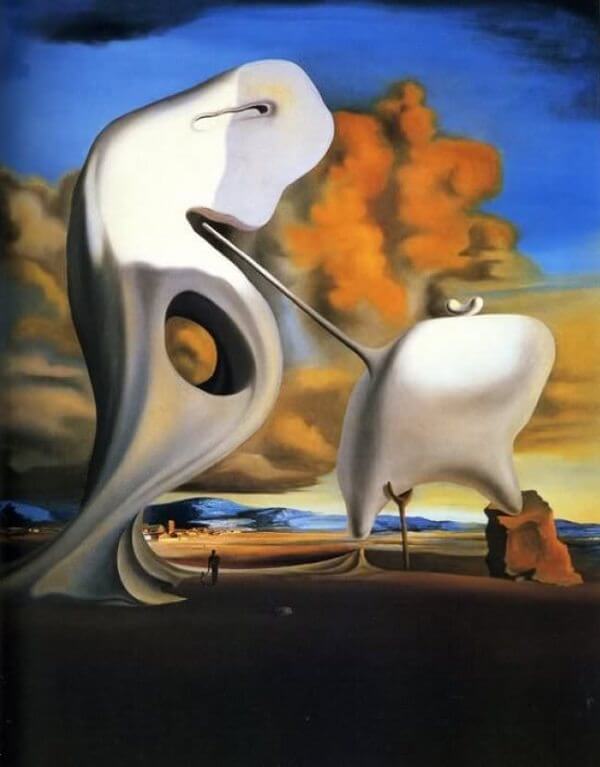Millet's Architectonic Angelus, 1933 by Salvador Dali

Along with the Melting Watch, one of the most persistent obsessive images in Salvador Dali's works is undoubtedly The Angelus of Jean-Francois Millet, painter of the peasant world. Just like Vincent van Gogh, Dali is very obsessed with Millet's The Angelus. The original painting shows several peasants, working in a field, who have stopped for afternoon prayer. Their heads are bowed reverently, and there is a wheelbarrow between them, with field scenery stretching out behind them.
The Angelus was reproduced frequently in the 19th and 20th centuries. Salvador Dali was fascinated by this work, and wrote an analysis of it, The Tragic Myth of The Angelus of Millet: Dali thought that there was something hidden in the canvas due to the presence of a feeling of anguish. Confirming Dali's own interpretation of the picture, an X-ray examination of Millet's canvas has revealed a geometrical shape between the two figures, the coffin of their dead child. This part was painted over by the artist to make the picture more saleable.
In June 1932, there suddenly came to my mind without any close or conscious association, which would have provided an immediate explanation, the image of The Angelus of Millet. This image consisted of a visual representation which was very clear and in colors. It was nearly instantaneous and was not followed by other images. It made a very great impression on me, and was most upsetting to me because, although in my vision of the afore-mentioned image everything corresponded exactly to the reproductions of the picture with which I was familiar, it appeared to me nevertheless absolutely modified and charged with such latent intentionality that The Angelus of Millet Suddenly became for me the pictorial work which was the most troubling, the most enigmatic, the most dense and the richest in unconscious thoughts that I had ever seen. ”
Dali had been obsessed with the image as a child, finding parallels between that and two cypress trees that stood outside his classroom. He also began to see The Angelus in vision in objects around him: once in a lithograph of cherries, once in two stones on a beach. The Architectonic Angelus of Millet was based upon this latter vision. The tragic myth of Millet's Angelus is one of Dali's most profound fantasies.























